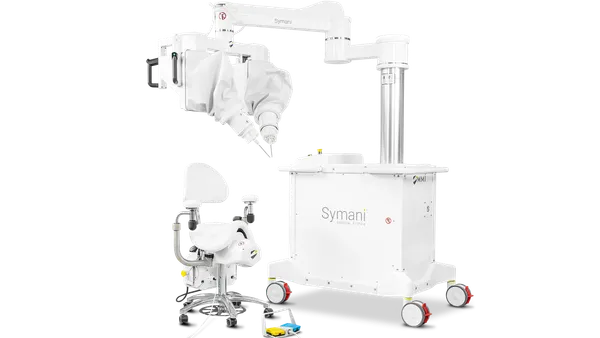Dive Brief:
- FDA's Circulatory System Devices Panel Advisory Committee recommended Thursday paclitaxel-coated balloons and paclitaxel-eluting stents should remain on the market, but new labeling should be put into place warning physicians and patients of a potential long-term mortality signal to inform decision making.
- The panel, which struggled throughout the two-day meeting evaluating the safety of the products due to incomplete data, agreed more data must be collected but differed on the method FDA should use. Ideas suggested by FDA and panel members ranged from new randomized controlled trials to utilizing registry data, but there was no conclusive recommendation on which option to pursue.
- Industry asked FDA to update its March letter to providers to include "the totality of evidence available in support of the benefit-risk profile of these devices for their indicated use," but it's unclear when FDA will take additional steps. BD, Medtronic, Boston Scientific, Philips and Cook Medical currently market paclitaxel devices.
Dive Insight:
The panel was nearly unanimous on the near-term benefit of paclitaxel devices, which, in some cases, can prevent the need for amputating a leg, justifying the products staying on the market as an option for patients.
Panel member Joaquin Cigarroa, associate chief of clinical cardiology at Oregon Health & Science University, argued the benefit of the devices is certain but the data behind the mortality signal remains unclear until more data is collected.
"There's no doubt that the addition of paclitaxel to a balloon or a stent in five developed devices today has favorably impacted quality of life, markedly decreased the need for repeat vascularization and as it has been approved, had a rapid adoption and a positive impact," Cigarroa said. "There's no doubt in my mind that there is a very consistent and clinically profound benefit to our patients, which has created an opportunity to us as clinicians to provide alternatives to open vascular procedures."
The panel was unable to determine a relationship between paclitaxel dose and mortality. It recommended future preclinical studies for paclitaxel devices use animal studies that utilize older animals with characteristics that replicate the human population in line to receive the devices.
FDA declined to comment on what future actions, if any, it might take.
"The FDA will be carefully reviewing what we learned here today and at an appropriate time continuing with developing further recommendations," Bram Zuckerman, office director of the FDA's Division of Cardiovascular Devices, told MedTech Dive.
Sasha Simpson, an analyst at Heldman Simpson Partners, wrote to investors in a research note the likely outcome is FDA will work with industry to develop a combined clinical trial and use existing registries to attempt to find potential causes of mortality.
"We believe utilization will be limited for the remainder of the year and into 2020 due to the continued concern and questions regarding potential mortality association with the devices," Simpson wrote. "These concerns are unlikely to be addressed absent new studies and analysis."
One worry raised by several panel members is what will happen if the effort to collect additional data does not explain the mortality signal.
"What we would hope is that the additional studies would have enough information that the panel doesn't need to convene, that the FDA can make that decision without the advice of the panel," panel chair Richard Lange told MedTech Dive. "However, if it's still inconclusive and there are additional things that need to be done, I wouldn't be surprised if the FDA calls us back to the region to get more information."













